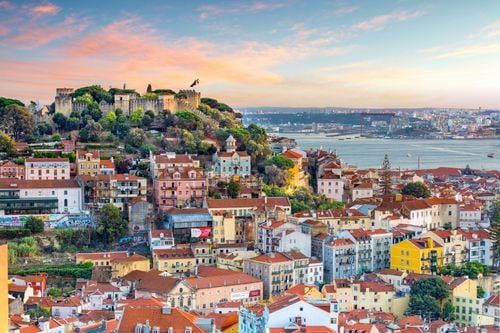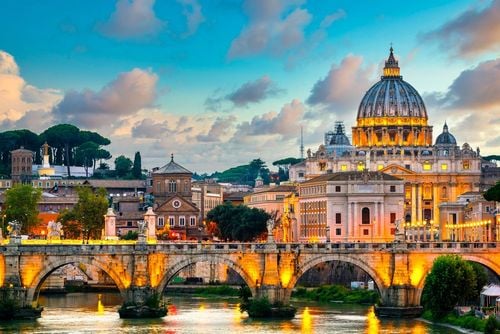The authenticity of Portugal
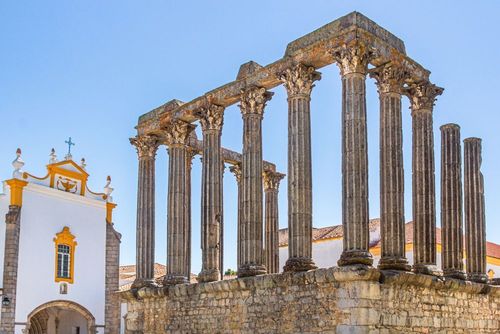

The authenticity of Portugal
The Alentejo is one of Portugal's most historically and architecturally rich regions. In each of its towns, architectural wonders await you around every corner, reflecting the rich and varied history of Portugal over the centuries. To name but a few, towns such as Évora, Monsaraz, Beja and Élvas are outstanding examples of medieval, baroque and renaissance architecture. On this historic tour, you can admire the churches, monasteries, palaces, castles and ramparts that bear witness to the region's glorious and turbulent past.
Évora is an architectural jewel and a UNESCO World Heritage Site, surrounded by medieval walls. Its cobbled streets and superb historic buildings, such as the Gothic cathedral, the Palace of the Dukes of Cadaval and the Roman temple, give it a unique charm.
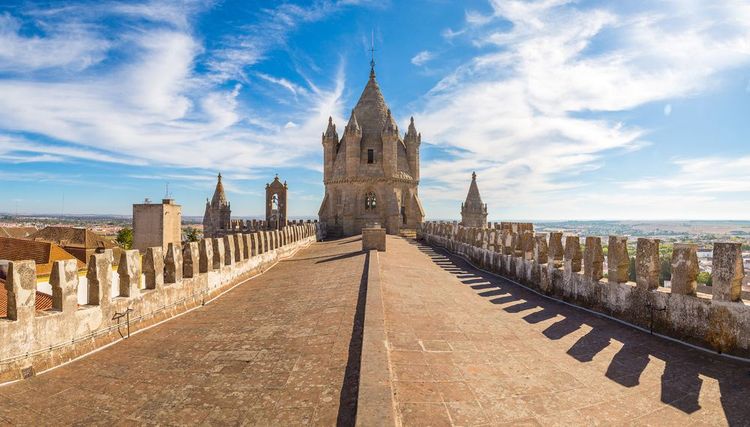
Évora Cathedral in Portugal's Alentejo region.
- © Sergii Figurnyi / ShutterstockLike Évora, Monsaraz is a fascinating historic town, set on one of the hills overlooking the River Guadiana, famous for its well-preserved medieval castle, ramparts, cobbled streets and historic churches. Monsaraz Castle is a remarkable example of military architecture, with its watchtowers and thick walls testifying to the town's strategic importance during the Portuguese wars. The town's narrow, winding streets are lined with white stone houses, creating a unique, authentic atmosphere.
Visiting the historic towns of the Alentejo is a unique opportunity to discover Portugal's fascinating history and to enjoy the spectacular beauty of the architecture, art and culture of this intoxicating region.

The town of Monsaraz in Portugal seen from the air.
- © LuisPinaPhotography / ShutterstockThe gastronomy of the Alentejo is one of the richest and tastiest in Portugal, and the region is known for its hearty, rustic traditional dishes, prepared with fresh, local ingredients. One of the region's most famous dishes is pork alentejano, which is usually prepared with fresh pork, garlic, herbs and spices. The meat is slow-cooked in olive oil and served with boiled potatoes and seasonal vegetables. Lamb dishes are also very popular, such as lamb stew and lamb roast, two dishes that meat lovers will remember. Seafood is also very present in Alentejo cuisine, with dishes such as fish soup, grilled seafood and seafood pasta.
Alentejo's PDO wines are applauded in the world of oenology, with local wines such as Borba, Reguengos and Portalegre wines proving a popular accompaniment to local dishes. Finally, traditional desserts, including Evora's famous pastries, encharcadas and sericá, are a real must. Gourmets can also indulge in delicious jams and dried fruit, such as figs, almonds and walnuts.
The beaches of the Alentejo are Portugal's hidden treasures. Some are ideal for surfers, while others are better suited to families and visitors looking for peace and relaxation. The Alentejo coast is known for its powerful waves, making it a popular destination for surfers. The beaches of Zambujeira do Mar, Odeceixe and Malhão are particularly well known. Comporta beach, with its white sand dunes, crystal-clear waters and wild landscapes, is one of the most popular spots for swimming and relaxing. Tróia beach is another popular destination, with its calm, warm waters and numerous water sports activities.

Comporta beach in Portugal.
- © TLF Images / ShutterstockThe beaches of the Alentejo also offer breathtaking views of the Atlantic Ocean, towering cliffs and stunning natural landscapes. The beaches of Melides, Porto Covo and Vila Nova de Milfontes are perfect destinations for admiring the region's natural beauty.


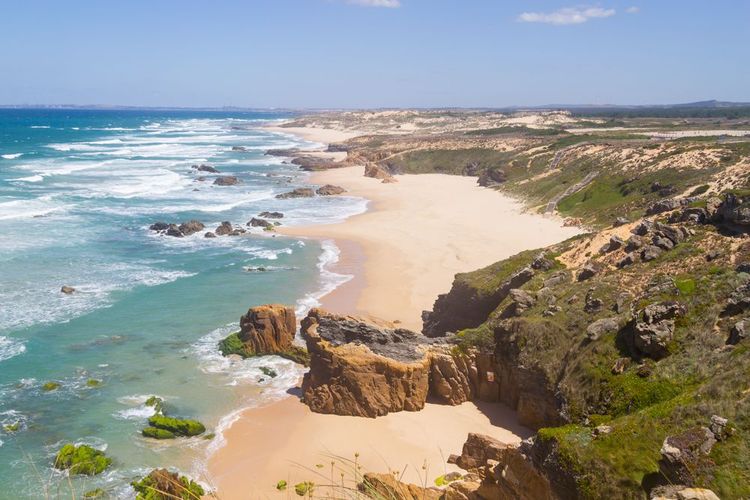 1
1
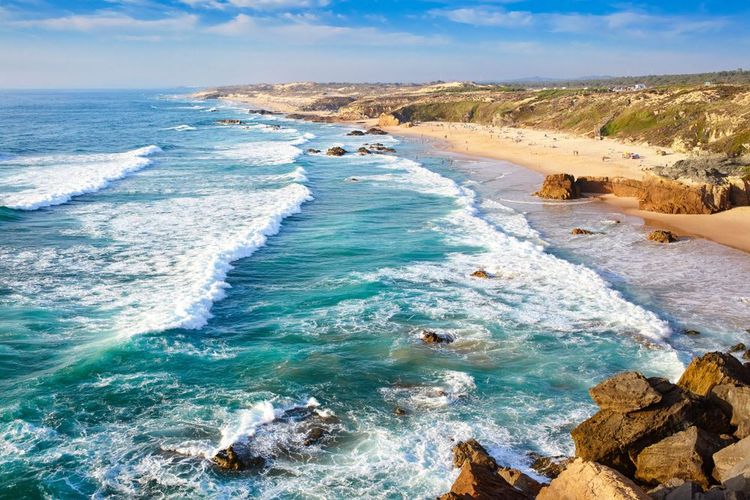 2
2
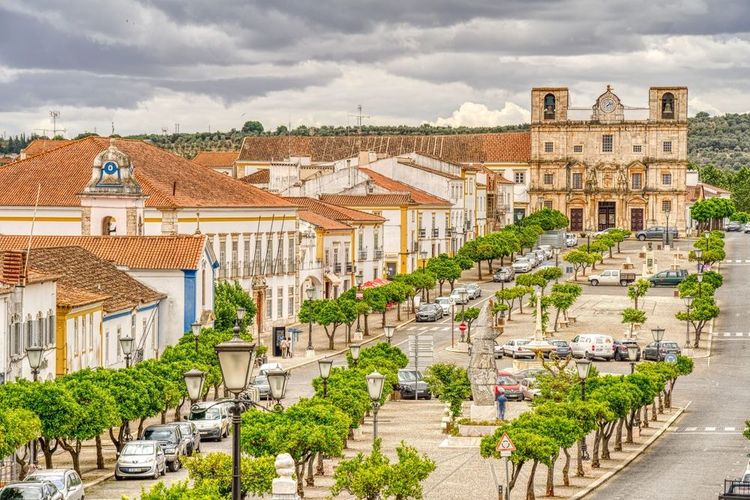 3
3
 4
4
The Alentejo region has an airport in the town of Beja. Alternatively, Alentejo has a mainline railway station at Évora, which links the region to the rest of the country. Main roads, such as the A2 motorway, also provide easy access by car from Lisbon or Faro, while airports in Lisbon, Porto and Faro are ideal for international travel.
The lands of the Alentejo offer a wide variety of accommodation, from luxury hotels to traditional guesthouses and campsites. Historic towns such as Évora, Beja and Estremoz have a range of accommodation options, while rural areas offer holiday homes and agritourism farms offering an authentic experience of rural Alentejo life. The region's accommodation highlights the rustic charm of the hinterland, with traditionally decorated interiors and tranquil gardens in which to relax.
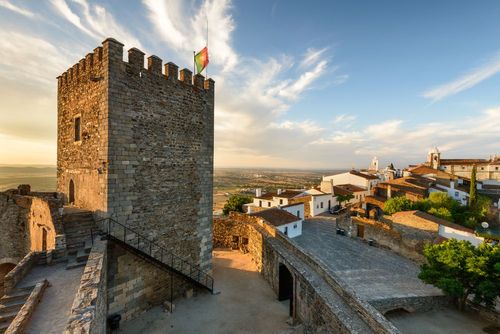
Winter weather
In winter, the climate in the Alentejo is generally cool and wet. Average daytime temperatures are around 14-16°C and nights are cold. Rainfall is more frequent and can sometimes be heavy. However, the region also has pleasant sunny days during the winter.
Summer weather
In summer, the Alentejo can be very hot and dry. With temperatures hovering around 30-35°C, it's sometimes impossible to stay in the sun between midday and 3 p.m. However, evenings are generally pleasant and cool, allowing you to enjoy the region's night-time ambience.
The best time to visit the Alentejo is generally from April to June or from September to November, when temperatures are milder and the influx of tourists is lower. During the summer, temperatures can be very high, especially inland in the Alentejo. However, if you are planning to visit the beaches of the Alentejo, summer is the ideal season. During the winter, the region can be rainy and cold, but this can be an ideal time to discover the local gastronomy and relax in the region's comfortable accommodation. The best time to visit the Alentejo depends on the activities you are planning and your personal preferences.
For citizens of the Schengen area
If you are a citizen of the Schengen area, you do not need to take any particular steps to travel to Portugal; you simply need to bring your identity card.
Unfortunately, many nationalities require a Schengen visa to travel to Portugal. This visa can be applied for at the Portuguese consular post in your country of residence or birth. For more information on administrative procedures, visit the official Portuguese website.
There are currently no restrictions relating to COVID-19 in Portugal.
We have calculated an average budget for a week's holiday for two in the Alentejo.
Car hire and activities
Car hire is very affordable in Portugal. For a week's rental of a city car, we paid €150. In addition, the two of us had a budget of €40 for activities such as admission to museums, etc. Our budget for car hire and activities for 7 days was €430, for the two of us.
Accommodation in the Alentejo
Accommodation in the Alentejo comes in all price ranges, with the average double room costing between €60 and €90. You can, of course, find rooms for €50 a night, or treat yourself to luxury hotels. We have established an average budget of €70 per night, for 6 nights, so the budget for a week's accommodation is €420.
Restaurant budget on holiday in Alentejo
The restaurants in the Alentejo offer authentic home cooking. Our budget for a meal for two is around €30 in a local tavern. We calculate a budget of around €210 for 7 days, based on one restaurant a day. Total budget for a holiday for two in the Alentejo In total, the budget for a week for two in the Alentejo region is €1,060, which includes car hire, accommodation and restaurants for a week for two.
Cycling along the Alentejo's country roads, you'll discover magnificent landscapes and breathtaking views of vineyards and olive groves. Don't forget to stop off at the local wine cellars and wineries to taste the region's wines and learn more about winemaking techniques.
explore Try out our comparators
It is Easy to travel

